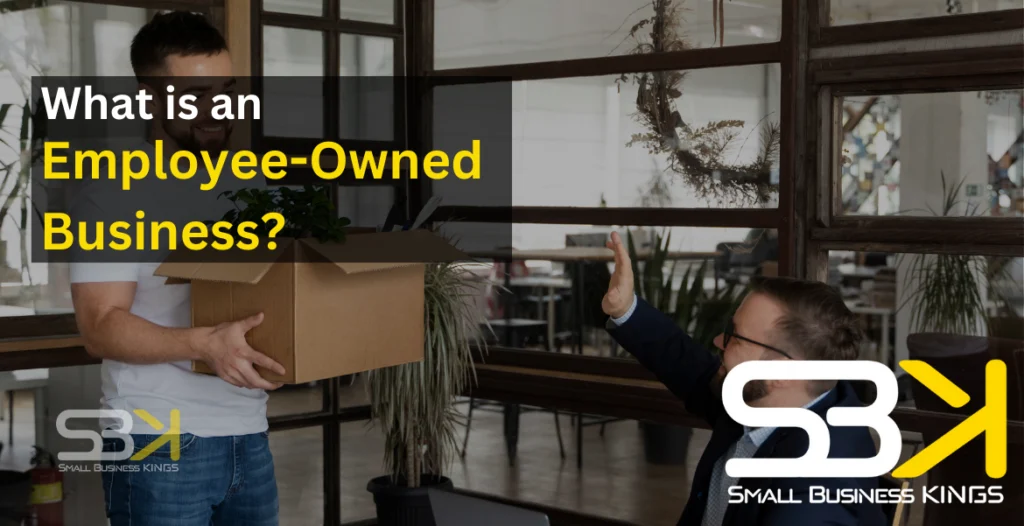An employee-owned business is a company where the employees hold a significant stake in the ownership. This ownership can come in various forms, including stock ownership, cooperative structures, or direct ownership. The concept of employee ownership is gaining traction as it offers a more inclusive and participative approach to business operations.
History of Employee-Owned Businesses
Early Examples and Origins
The roots of employee-owned businesses can be traced back to the early 19th century. One of the earliest examples is the Rochdale Pioneers, a cooperative founded in 1844 in England. These pioneers set the foundational principles of cooperative businesses, emphasizing democratic governance and equitable profit-sharing.
Evolution Over Time
Over the decades, the idea of employee ownership has evolved. In the United States, the concept gained momentum in the 1970s with the establishment of Employee Stock Ownership Plans (ESOPs). This evolution has been marked by a growing recognition of the benefits of involving employees in ownership structures.
Key Milestones
Key milestones in the history of employee-owned businesses include the establishment of the first ESOP by Louis Kelso in 1956, the passage of the Employee Retirement Income Security Act (ERISA) in 1974, and the subsequent growth of ESOPs in various industries.
Types of Employee Ownership Structures
Worker Cooperatives
Worker cooperatives are businesses owned and self-managed by their workers. Each member has an equal say in decision-making processes, promoting a democratic approach to governance.
Employee Stock Ownership Plans (ESOPs)
ESOPs are retirement plans that invest primarily in the employer’s stock. They provide employees with ownership interest in the company without requiring them to invest their own money.
Direct Share Ownership
In this structure, employees are given or can purchase shares directly. This method allows for a straightforward and transparent ownership process.
How Employee-Owned Businesses Operate
Governance and Decision-Making
Employee-owned businesses often adopt a participative governance model. Decisions are made democratically, with employees having a voice in major company policies and strategies.
Distribution of Profits
Profits in employee-owned businesses are typically distributed based on the number of shares or the level of participation in the cooperative. This equitable distribution ensures that all members benefit from the company’s success.
Role of Employees
Employees in these businesses are not just workers; they are stakeholders with a vested interest in the company’s performance. This dual role fosters a sense of responsibility and engagement.
Steps to Transition to an Employee-Owned Business
Transitioning to an employee-owned business involves several crucial steps:
- Feasibility Assessment: Evaluate if employee ownership fits your business model and culture.
- Stakeholder Education: Educate employees and shareholders about the benefits and implications of employee ownership.
- Ownership Structure Selection: Choose between ESOPs, cooperatives, or direct share ownership.
- Valuation and Financing: Determine company value, arrange financing for the transition.
- Legal and Governance Setup: Establish legal frameworks, update bylaws, ensure compliance.
- Employee Engagement: Involve employees in decision-making, provide training on ownership responsibilities.
- Implementation and Communication: Roll out changes gradually, maintain transparent communication.
- Monitoring and Adjustment: Evaluate performance, adjust strategies for optimal results.
Advantages of Employee-Owned Businesses
Enhanced Employee Motivation and Productivity
When employees have a stake in the business, they are more motivated to see it succeed. This often leads to higher productivity and innovation.
Better Financial Performance
Studies have shown that employee-owned businesses tend to perform better financially. The alignment of employee and company interests drives better business outcomes.
Improved Job Security
Employee ownership can lead to greater job security. Employees are less likely to face layoffs and more likely to enjoy stable employment.
Challenges Faced by Employee-Owned Businesses
Raising Capital
One of the significant challenges is raising capital. Traditional financing options may be limited, requiring creative solutions to fund growth and expansion.
Navigating Growth and Scalability
Scaling an employee-owned business can be complex. Balancing the need for growth with maintaining the cooperative or ownership structure is a delicate task.
Maintaining Employee Engagement
Sustaining high levels of employee engagement over time can be challenging. It requires continuous efforts to involve employees in decision-making and keep them motivated.
The Future of Employee-Owned Businesses
Trends and Predictions
The trend towards employee ownership is expected to grow. More companies are recognizing the benefits of this model, leading to increased adoption across various sectors.
Potential Impact on the Economy
Employee ownership can have a profound impact on the economy. It promotes wealth distribution, reduces income inequality, and fosters more resilient business practices.
Government Policies and Support
Governments are increasingly supporting employee ownership through favorable policies and incentives. These initiatives are crucial for the continued growth of this business model.
FAQs
- What are the tax benefits of employee ownership?
Employee-owned businesses, particularly those with ESOPs, often enjoy significant tax advantages. These can include deferred taxation on stock contributions and potential tax-free gains for employees upon retirement. - How does employee ownership affect company culture?
Employee ownership typically leads to a more engaged and motivated workforce. It fosters a culture of collaboration, accountability, and shared success, positively impacting overall company performance. - Can any business become employee-owned?
While many businesses can transition to employee ownership, it may not be suitable for all. Factors such as company size, industry, and financial health play a crucial role in determining feasibility. - What resources are available for businesses considering employee ownership?
There are numerous resources available, including government programs, non-profit organizations, and consulting firms specializing in employee ownership transitions. These resources provide valuable guidance and support throughout the process. - How do employee-owned businesses compare to traditional businesses?
Employee-owned businesses often outperform their traditional counterparts in terms of employee satisfaction, productivity, and financial stability. However, they may face unique challenges in raising capital and scaling operations.




